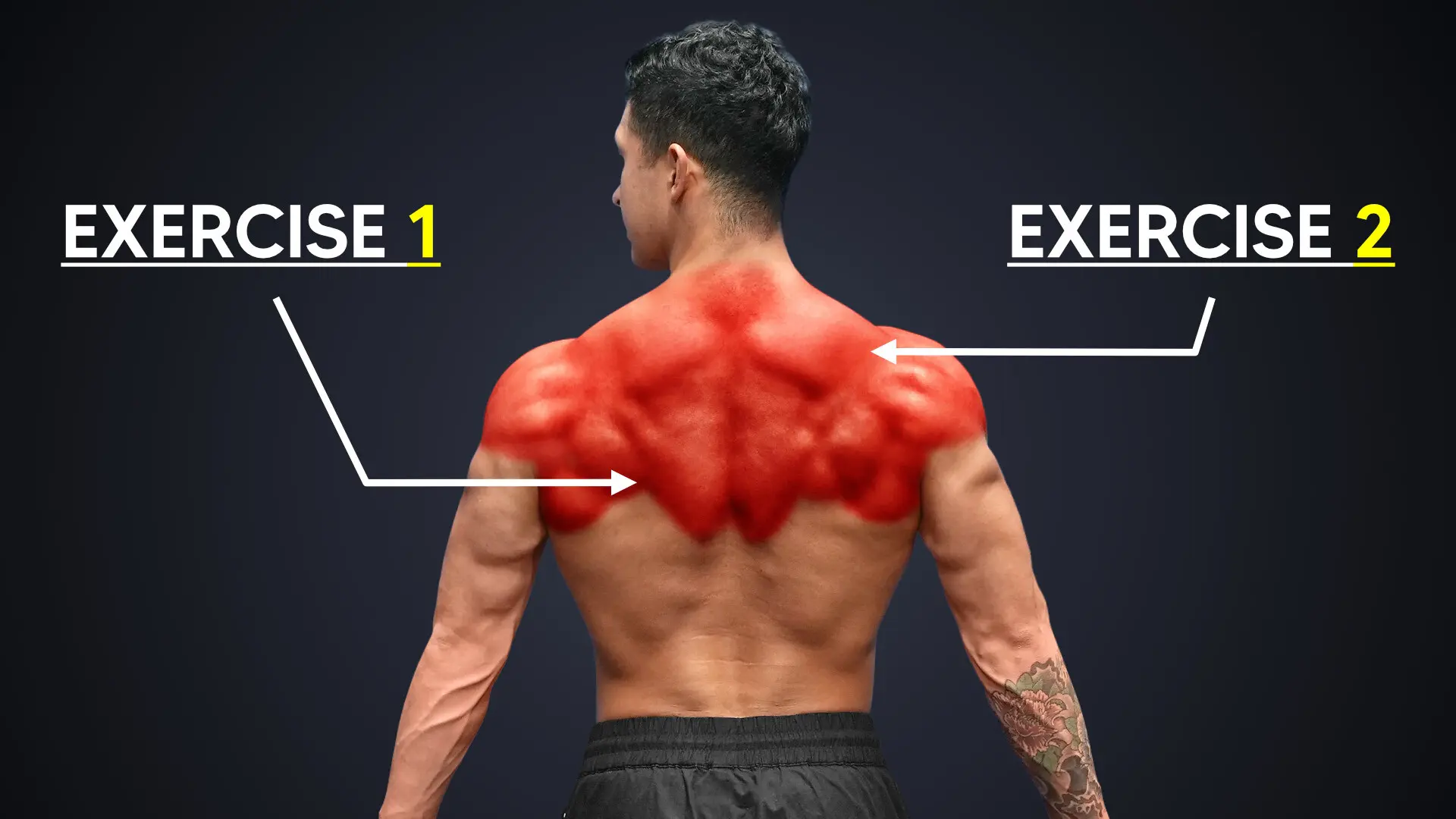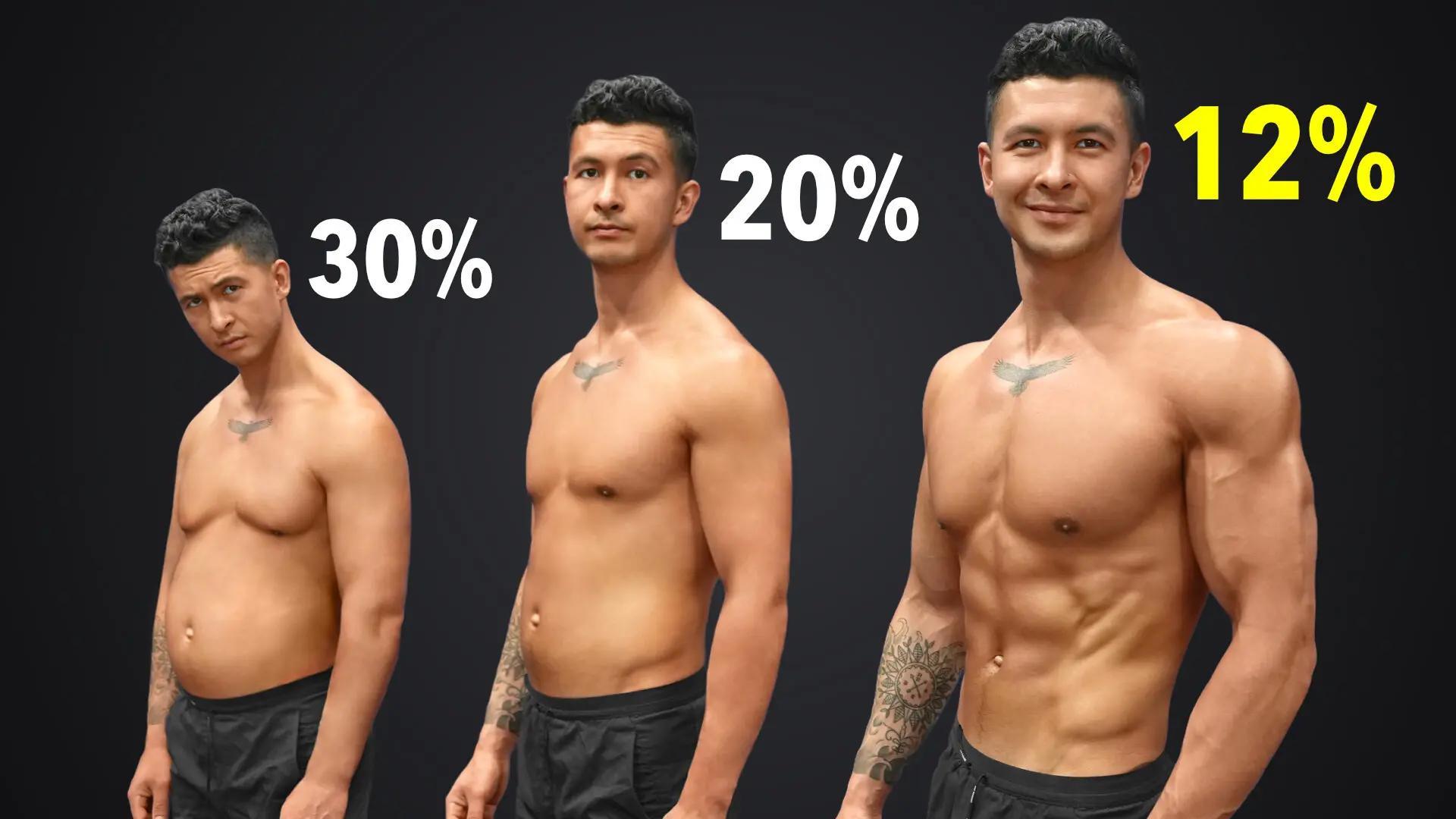
Deadlifts: Which Type is BEST For You?
Want to learn which type of deadlift will provide you with the best results? Then you need to read this article.
The deadlift can be argued as the single best exercise for strengthening and developing the posterior chain.
Although the conventional deadlift is typically what pops into most people’s minds when they think of the deadlift, it’s important to note that there are other variations that exist. Two such variations include the sumo deadlift and the trap bar deadlift.
These alternatives not only slightly vary in the muscles they work and the training adaptations they elicit...
...but may actually be the better option for you based on your specific anthropometry, history of injury, and mobility restrictions.
But how can you tell which one is best for you?
Well, let’s start by briefly going over how each deadlift is performed and then dive into what the differences are between them.
If you appreciate personalized, science-based training insights, you’re going to love the BWS programs. I’ve designed every single one of them to contain valuable knowledge on why (exactly) you’re using a specific exercise to target a particular muscle group. This way, you’ll gain a deeper understanding of your training – while experiencing the quickest gains possible. If you’re interested:
Click the button below to take my analysis quiz to discover the best program for you:
↓
1) Conventional Deadlift Form
The conventional deadlift, which is the most popular option, is characterized by a narrow foot stance with the hands placed just outside of the knees.
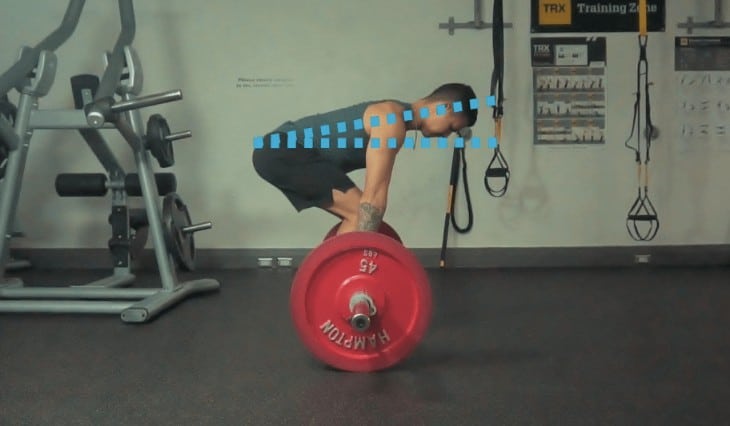
This causes the conventional deadlift to have a more horizontal trunk angle during the setup than the other forms of the deadlift.
2) Sumo Deadlift Form
The sumo deadlift, a popular alternative, is characterized by a wider foot stance with the hands placed inside the knees at about shoulder-width apart.

This causes the sumo deadlift to have a more vertical trunk angle and resembling more of a squat movement than the other forms of the deadlift do.
2) Trap Bar Deadlift
The trap bar deadlift (or hexagonal bar deadlift) uses a different type of bar such that you grip the bar at your sides rather than in front of you.

As a result, the trunk angle is slightly more vertical than the conventional deadlift but more horizontal than the sumo deadlift.
Now these slight variations with each type of deadlift simply mean that one might be better suited for you depending on a few factors.
And to start, let’s first take a look at the differences in the muscles worked.
Factor 1: Muscles Worked
Given that each of these variations are still a deadlift, the main muscles worked will be quite similar. They will each primarily target the several muscles that make up the posterior chain:

However, as made evident in the literature, each deadlift variation will emphasize certain muscles over others.
Sumo Deadlift + Trap Bar Deadlift = Greater Quadriceps Involvement
The overall upper back, hamstrings and glute activation is quite similar between the 3 variations.
But, since sumo and trap bar deadlifts are more squat-like than the conventional deadlift, they will actually emphasize the quadriceps a little more as a result. And this was tested and confirmed in two EMG analyses (one, two).

Both analyses found that these deadlift variations resulted in roughly 20% greater quadriceps activation when compared to the conventional deadlift.
Conventional Deadlift = Greater Lower Back Involvement
On the other hand, since the conventional deadlift exhibits more of a hinge pattern than the other variations do, it’s going to place more emphasis on your lower back muscles. This is simply because they have to work harder to keep the back extended as the bar lifts off the floor.
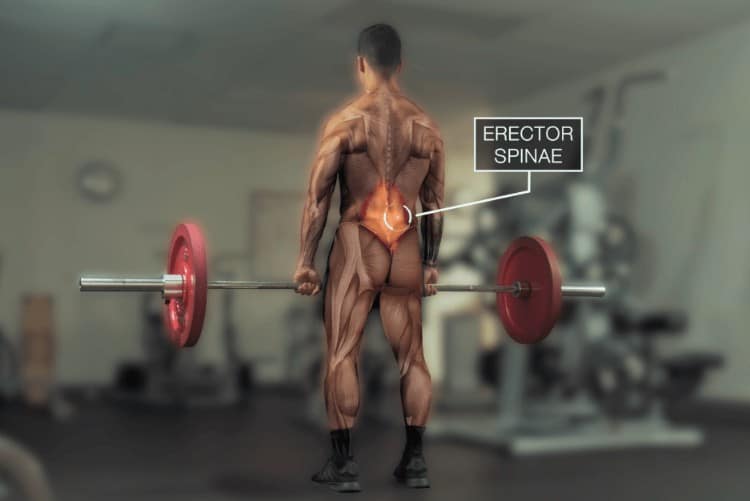
In fact, a biomechanical analysis by Cholewicki and colleagues has shown that spinal extension demands are roughly 10% higher in the conventional deadlift as a result.
So to recap:
- Sumo deadlift & trap-bar deadlift = less lower back muscle involvement but more quadriceps involvement
- Conventional deadlift = greatest lower back muscle involvement and less quadriceps involvement
...and what does this mean for you?
It means that one way to pick the best deadlift is by choosing which type of deadlift will best work your weakpoints.
For instance, if your squat and/or quadriceps in general are relatively weak, then the trap bar or sumo deadlift may be the better option. Conversely, if your lower back muscles are relatively weak or you’d just like to develop them more, then the conventional deadlift might be the better option instead.
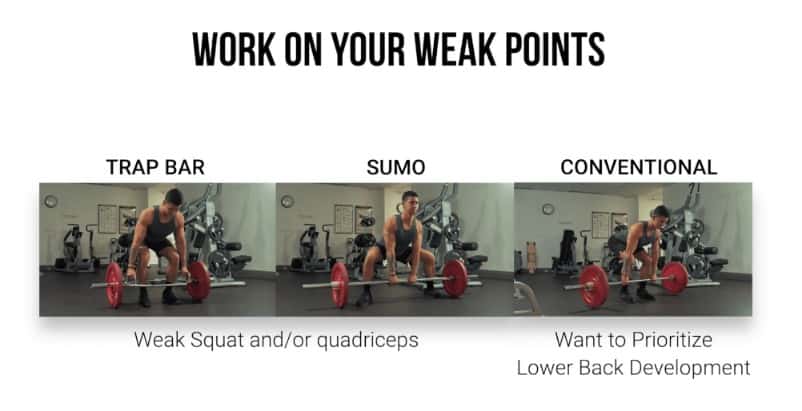
Not sure what your weak points are? Our 3-on-1 coaching program can help. You are going to have a coach to focus solely on your training - so you have a clear idea of what you should be working on for the quickest gains in the gym. Plus, a dietitian and I will also be available to guide you every step of the way. If that sounds good to you, then:
Click the button below to find out more about the 3-on-1 coaching program:
↓
Factor 2: Lumbar Spine + Mobility Demands
The conventional deadlift will generally require the greatest mobility requirements to get into the right setup position. In addition, it will also place the most strain on the lumbar spine.
In fact, the analysis I mentioned earlier found that:
The conventional deadlift elicits roughly 8% more shear force on the lumbar spine when compared to the sumo deadlift.
This is mainly because the starting position is more horizontal during the conventional deadlift.

Now although this isn’t necessarily a bad thing, it does mean that if either:
- You’ve had past lower back injuries
- Have trouble properly getting into position with the conventional deadlift
...then the sumo deadlift would likely be the better option.
But what may even be the BEST option in this case is the trap-bar deadlift.
This is because the handles on the bar used for this deadlift are typically slightly higher from the floor than a normal barbell would be:

This slightly decreases the range of motion of the exercise. As a result, this often makes it much easier for beginners or taller individuals to set up and execute properly when compared to other deadlift variations.
And more importantly, the fact that it enables you to grip the bar from the sides and not from the front...

...enables the load to now be closer to your centre of mass. Translating into less shear force on the lumbar spine. While also making it easier for you to keep a neutral back throughout the lift!
Meaning that if mobility restrictions and/or past lower back injuries are a concern for you... then the trap-bar deadlift is likely your best bet.
So to recap:
- Conventional deadlift = involves the greatest strain on the lower back (lumbar spine) and mobility requirements
- Sumo deadlift = involves slightly less strain on the lower back (lumbar spine) and less mobility requirements
- Trap-bar deadlift = involves the least strain on the lower back (lumbar spine) and the least mobility requirements
But before making a final decision, let’s take a look at the last factor below.
Factor 3: Training Goals
Training goals are important to consider when determining which deadlift variation will best suit you.
Size and/or Strength
For instance, if your main goal is to build more size and overall strength, then all three deadlift variations are viable options to do so.
Do note however that research shows that the conventional deadlift has a 20-25% greater range of motion than the sumo deadlift and is greater than the trap bar deadlift.
This may imply that it's better for growth given the positive association between range of motion and hypertrophy.
But in my opinion this fact alone wouldn’t be enough to say that its superior than the other variations for muscle size.
Athleticism
If your main goal is to improve your athleticism and to enhance your sports performance however, then the trap-bar deadlift would be the best option. In fact, most professional athletes (NBA, NFL players) tend to perform the trap-bar deadlift over the other variations.

This is because three studies (one, two, three) have now shown that this deadlift variation involves greater force, bar speed, and peak power than the other variations. Therefore making it the ideal option for athletes who often require high velocity strength and explosive power.
Summary: The Best Type of Deadlift
So to conclude, here are the various factors to consider when choosing which deadlift is best for you:

I do want to also say that it’s perfectly fine to alternate between the variations or incorporate more than one of them into your training. For many of you, this may be the best approach since each type of deadlift comes with their own benefit.
Just note that there's typically not one version that's best for everyone. Your individual anthropometry and history will be the major factors that determine this. So it's vital that you choose the right variations based on your specific goals and what best suits your body and your history of injury. And if you're looking for an all-in-one evidence based program that does exactly that...
...such that you can transform your body as efficiently as possible from your starting point AND maximize your efforts in the gym...
Then join the thousands of other members today by taking my starting point quiz I have up in order to discover which program and which approach is best for you:
Click the button below to take my analysis quiz to discover the best program for you:
↓
Anyways, that’s it for this article – hope you enjoyed it and found it useful! Don’t forget to give me a follow and connect with me on Instagram, Facebook, and Youtube as well to stay updated with my content. Cheers!



